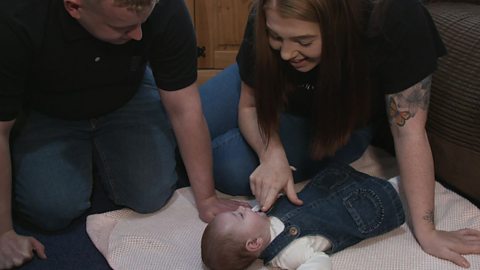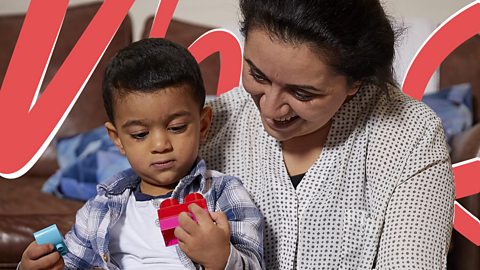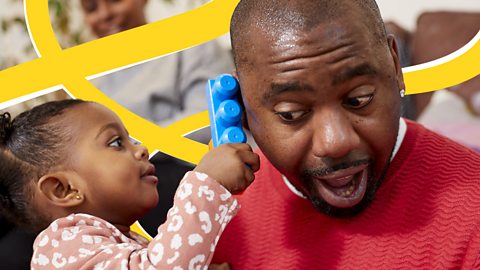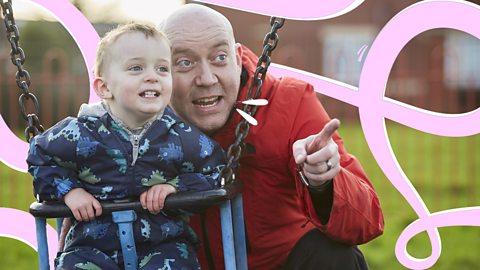Baby massage is a blissful way for you and your baby to bond.
And although it has countless benefits, the core principles are quite simple.
“Basically, baby massage means a caregiver using very soothing, loving and rhythmic strokes on each area of a baby’s body in turn,” explains Louise Wilkinson of Precious Beginnings, a certified instructor with the International Association of Infant Massage.
“And it may be called baby massage but the techniques can be used in older childhood and beyond. It can continue as long as your child wants,” explains Louise.
Benefits of baby massage
“It’s super-relaxing for them and can improve the quality of their sleep. Touch releases oxytocin – the love hormone – in you too, so you’ll feel calmer as well,” says Louise. “It can help with baby’s flexibility, body awareness and coordination – for example, realising that their foot is part of their body. There’s also evidence to show it can help with specific conditions like wind, colic and teething discomfort.”
But the benefits don’t end there. Baby massage builds your shared bond, explains Louise.

“Massage helps you and your baby learn how to communicate with each other. It helps your baby feel secure, loved and respected by you and you’ll learn about their subtle cues, understand their behaviour and be responsive to them too. This helps you feel more confident as a parent and there are studies to show it can reduce postnatal depression.
“The interactions you have during massage are also the building blocks of language development because you have eye-to-eye contact and an opportunity for copying and turn-taking, which helps your child learn conversation skills.”
How to do it
“You can actually start before your baby is born by massaging your bump, talking and singing to them,” says Louise. “Once they’re in the world, I’d recommend trying baby massage before they’re crawling, as it can get trickier when they’re able to move around. But it’s never too late to start,” says Louise.
It’s natural to feel nervous about using massage, particularly in terms of how much pressure is safe for your baby. Classes and workshops with qualified instructors can help you build your confidence and can connect you with other parents – ask your midwife or health visitor for recommendations or search online.
But if you aren’t able to get to classes, there are lots of simple touch techniques you can try safely at home. These include stroking up and down your baby’s legs while you’re supporting their ankles, soft circular clockwise motions around their tummy, circles on their palms and very gentle tugs of their fingers and thumbs, as you hold their wrists.
The charity Tommy's has some tips on how to massage different parts of your baby.
Create a calm and comfy environment
“Ideally, try sitting on the floor to massage your baby, placing them on a changing mat or soft towel. If that’s not possible, for example, because you have a disability, place them safely on a bed, sofa or table,” explains Louise.
Take off any jewellery that could catch your baby’s skin, be careful of long nails, scarves and necklaces dangling from your neck.
"Make sure your room is warm and I’d recommend keeping the lighting very natural and low, rather than placing a light directly over your baby.”
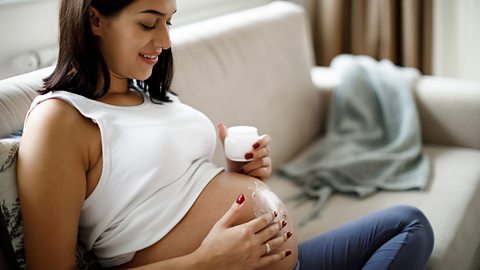
Use a baby-safe oil or lotion
NHS guidance recommends avoiding oils in your baby’s first month, as their skin is pretty delicate.
Once they’re old enough, get a baby-specific product from your pharmacy, health shop or supermarket, which contain a blend of oils.
“Or choose a pure, non-scented natural vegetable or fruit oil such as grapeseed. Olive oil is not recommended,” says Louise. “You don’t need much in the palm of your hand and remember oils make your and your baby’s skin slippy, so take care picking them up. If you use an emollient cream because your baby has dry skin or eczema, then you could use that instead. You could also try touches and strokes through their clothes too without using an oil.”
Follow your baby's lead
Although it’s great as part of your baby’s bath and bedtime routine, there are no hard and fast rules about the best time for massage. Instead, use your baby’s cues as a guide – they should be quietly alert and content. If they are tired and hungry, it’s best waiting.
Before you start ‘ask their permission’ explains Louise. “For example, if you say ‘Would you like a massage?’ and use a visual signal, such as holding out a hand, so your baby can see that you’re about to start, and they smile or pull your hand towards them, then they're ready.” If they are restless and turn their head, they’re not ready.
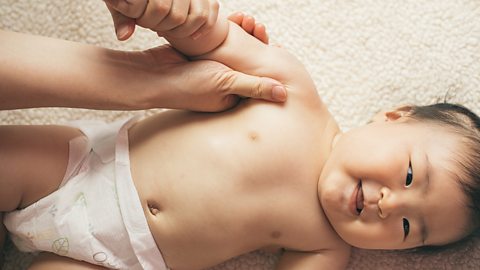
Adapt your approach according to your baby too. “For example, premature babies can be quite sensitive and need a much gentler approach – this might simply be holding your hands just above them and so they feel the warmth,” says Louise. How long the massage lasts also depends on baby.
“It might be that you're only getting a leg done before they fall asleep or become restless and that’s OK. Don’t worry about massaging their whole body if they’re not up to it. The younger they are, the shorter and less frequent their alert times are likely to be.”
Chatting, singing and telling stories can help
Talk and name body parts as you go – it’s a great way for your baby to start to learn about themselves. Singing during your massage times can also be really reassuring for baby and will help boost their language development.
Nursery rhymes are particularly good as they have actions that can accompany your touches and strokes, adds Louise. “I’d recommend Round and Round the Garden, Pat-A-Cake, Incy Wincy Spider, Tommy Thumb or Jelly on a Plate.”
Safety notes
- Remember not to leave your baby unattended at any time.
- Patch test oil or lotion on your baby before you use it for the first time: dab on a small area of their skin to make sure they don’t have a reaction.
- Avoid putting pressure on your baby’s joints during massage.


